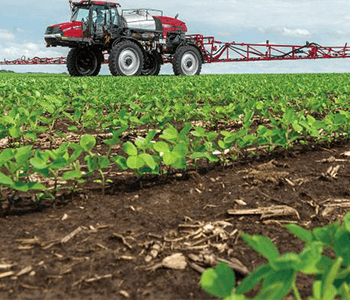Best Tank Mixing Secrets Your Farm Should Know
May 02, 2019

Raise your hand if you’ve ever snotted up a sprayer tank or made cottage cheese. If you haven’t , consider yourself lucky or really knowledgeable , because most of us have made a mess or four when mixing chemistries at some point in our careers. That’s pretty normal considering tank mixing can be really tricky. It is , after all , real-life hard chemistry , and unless pesticides are your passion , you may not know the right order for products to go in the tank. The good news is , I would say 85% of the calls I’ve received about tank mixing issues could have been prevented , and I’m here to share some of the best management practices for tank mixing.
- Water. I cannot encourage you enough to fill your tanks half full before adding any active ingredients into the tank. Ever heard the phrase “dilution is the solution to pollution?" Well , it’s also very often the solution to preventing clogged up tanks , booms , inductor cones , nozzles , etc. If water had a #1 fan , it would be a happy tank mix.
- Time. Allow plenty of time between ingredient additions. Hot-loading concentrates of active ingredients can lead to a big , bad tank mix mess.
- Remember your WALES and DALES:
- Wettable powders (or Dry flowables)
- Agitate
- Liquids
- EC formulations and then
- Surfactants
- Mixing order matters.
- Water first
- Any defoamers/antifoamers
- Water conditioners (Your local GreenPoint AG rep can get your water tested if you’re unsure of the hardness)
- E.g. Class Act Ridion for dicamba or Class Act NG for non-dicamba systems
- On-Target™ (This is an exception to the typical WALES and DALES. While On-Target™ is a DRA and therefore a surfactant , it takes the product time to activate and provides the best performance when added after the water conditioner)
- The Ws and Ds of WALES and DALES
- WSP - Water soluble packet
- WP – Wettable powders
- DF – Dry Flowables (Authority®First , Authority® MTZ)
- WDG – Water dispersible granule (First Rate® , Rowel® , Rowel®FX , Valor®SX , Valor®XLT , Zidua®)
- SP – soluble powder
- DG – dispersible granules (Authority® MAXX , Authority® XL , Classic®)
- EXT – Extruded Granule (Dimetric® EXT)
- WG – Wettable Granule (Optill® , Sonic®)
- Dry Fertilizers
- SC – suspension concentrates (Prowl® H2O , Pursuit® , Sharpen®)
- Agitate
- Liquid flowables and suspensions
- F/FL – Flowables
- Suspension Fertilizers
- SE – suspo-emulsions
- SL – soluble liquid (Ascend®SL , Caparol® , Direx® , Extreme® , Reflex® , Staple® , Valor® EZ , Zidua® PRO)
- Max-In® Boron , Max-In® Zinc , Max-In® Sulfur , Max-In® Cotton NF
- XtendiMax®/Engenia™
- Emulsified Concentrates
- EC – Emulsified Concentrates (Cleanse®2EC , Framework® , Cobra® , Section® Three , Select®Max , Outlook® , Prowl®3.3EC)
- ME – Micro-encapsulated (Warrant® , Warrant® Ultra)
- Glyphosate (While not a part of the official WALES and DALES , glyphosate is that last pesticide product to go in the tank.)
- Surfactants/Adjuvants
- HSOC-MSO (Destiny®HC)
- HSOC-COC (SuperB® HC)
- NIS (Preference®)
- Drift and Deposition (InterLock® , StrikeLock™)
- Top off with water to fill up the tank.
- When in doubt , jar test and read label directions. A jar test can save you time , money and a headache later on.
This article adapted by Sara Smelser , Agronomist. If you have questions regarding tank mixes feel free to reach out at sara.smelser@greenpointag.com